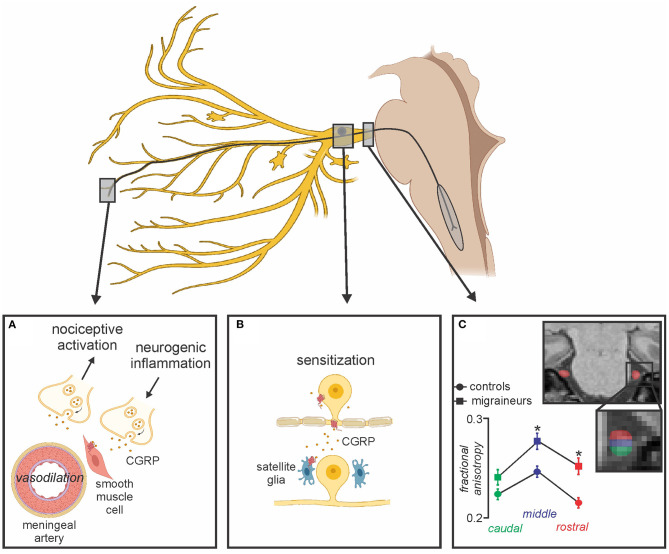Figure 2.
Peripheral changes associated with migraine. (A) CGRP released from peripheral terminals onto receptors act on smooth muscle cells leading to potent vasodilation of meningeal arteries, subsequent neurogenic inflammation, activation of meningeal nociceptors and peripheral sensitization; (B) Secreted CGRP from the trigeminal ganglion interacts with adjacent CGRP receptors on satellite glia resulting in prolonged sensitization; (C) Alterations in trigeminal nerve volume and free water diffusivity evident in episodic migraineurs compared to healthy controls may also be associated with chronic migraine. Modified from (68).

